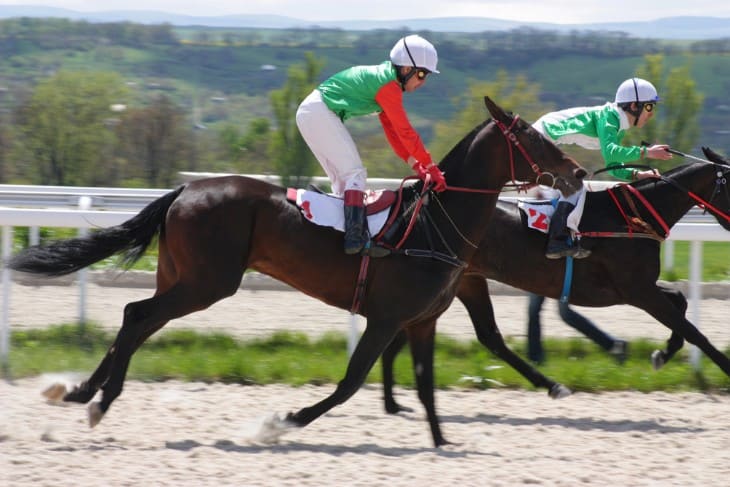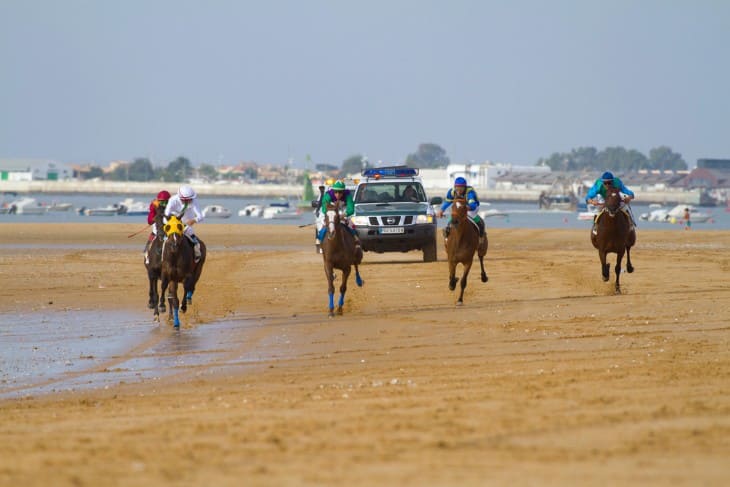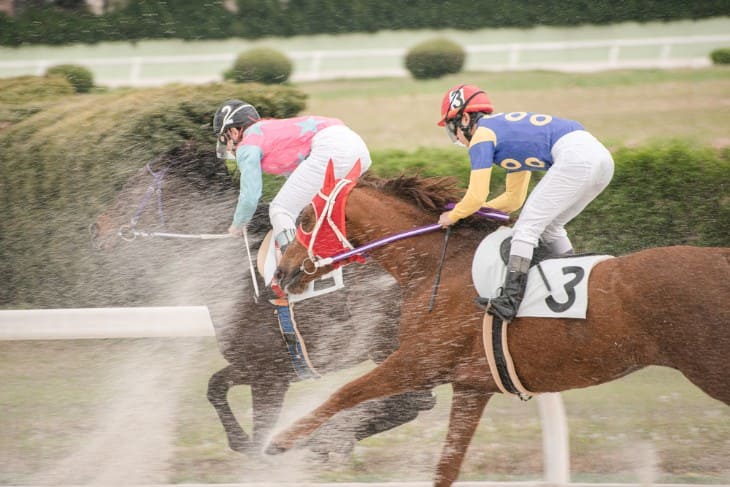- Daily Routines of Cheltenham Trainers
- The Evolution of Training Techniques
- Nutrition and Diet Plans for Cheltenham Racehorses
- The Role of Technology in Modern Horse Training
- Training Challenges and Overcoming Obstacles
- Health and Veterinary Care for Racehorses
- Preparing for Major Races: A Seasonal Overview
- The Impact of Cheltenham on the Global Racing Scene
- Conclusion
Daily Routines of Cheltenham Trainers
The daily routine of a Cheltenham trainer is a testament to the dedication and hard work required in the profession. A typical day begins at dawn, with trainers overseeing the morning exercise sessions. These sessions are crucial for maintaining the fitness and health of the horses and typically include:
- Warm-up exercises: Light trotting or cantering to prepare the horses’ muscles for more intense work.
- Training gallops: These are tailored to each horse’s individual training schedule, focusing on building stamina and speed.
- Cool-down routines: After intense exercise, horses undergo a cool-down period to prevent muscle stiffness.
Following the morning exercise, attention shifts to the wellbeing of the horses. This involves:
- Feeding: Ensuring each horse receives a nutritionally balanced diet tailored to their individual needs.
- Health checks: Routine health assessments are conducted to spot any signs of illness or injury early.
- Grooming: Regular grooming is essential not only for maintaining the horse’s coat but also for reinforcing the bond between horse and trainer.
The afternoon is often dedicated to planning and strategising for upcoming races, as well as liaising with horse owners and racing officials. The day concludes with an evening check on the horses, ensuring they are comfortable and ready for the night. This meticulous routine underlines the commitment of Cheltenham trainers to their charges, reflecting a blend of passion and professionalism that is characteristic of the region’s horse training culture.
The Evolution of Training Techniques
The training techniques employed by Cheltenham trainers have undergone significant evolution over the years. In the early days of Cheltenham racing, training methods were largely traditional, relying on time-tested practices passed down through generations. These included long, slow distance work to build stamina and strength, combined with occasional faster work to develop speed. However, as the science of equine physiology advanced, so too did the training techniques in Cheltenham. Modern training now incorporates a more scientific approach, including an understanding of how different types of exercise affect muscle and cardiovascular development.
In recent years, there has been a notable shift towards a more holistic approach to horse training. This encompasses not just physical training but also mental and emotional wellbeing. Techniques such as groundwork exercises, which promote trust and understanding between horse and trainer, have become more prevalent. Additionally, the use of technology, such as heart rate monitors and GPS trackers, allows trainers to tailor their programs to the individual needs of each horse, ensuring optimal performance on race day.

Nutrition and Diet Plans for Cheltenham Racehorses
Nutrition plays a pivotal role in the success of Cheltenham trainers and their horses. A well-planned diet is essential for maintaining the health, energy, and performance of racehorses. The dietary requirements of a racehorse are complex and must be carefully managed. Key components of a racehorse’s diet include:
- Forage: High-quality hay or grass forms the bulk of a racehorse's diet, providing essential nutrients and fibre.
- Concentrates: Grains such as oats, barley, and corn are used to supply additional energy.
- Supplements: Vitamins and minerals are often added to ensure the horse's diet is balanced and to support overall health.
Each horse's diet is tailored to its individual needs, taking into consideration factors such as age, weight, training intensity, and any specific health requirements. Trainers work closely with equine nutritionists to develop and adjust these diet plans, ensuring that each horse receives the optimal nutrition for its training and racing schedule.
Hydration is equally important. Trainers ensure that horses have access to clean, fresh water at all times, particularly after training sessions and races. Monitoring hydration levels is crucial, especially during intense training or hot weather, to prevent dehydration and associated health risks.
The combination of advanced training techniques and meticulous attention to nutrition exemplifies the professionalism of Cheltenham trainers. These aspects are fundamental in preparing racehorses for the demanding environment of competitive horse racing, highlighting the intricate balance between tradition and innovation in the world of horse training.
The Role of Technology in Modern Horse Training
The integration of technology in horse training has revolutionised the methods used by Cheltenham trainers. In the past, much of the training was based on experience and intuition. However, the advent of sophisticated technological tools has provided trainers with a wealth of data to inform their training decisions. One of the key technologies is motion sensors, which are used to monitor and analyse a horse's gait. These sensors provide valuable information on stride length, frequency, and symmetry, helping trainers identify any potential issues before they become problematic.
Another significant technological advancement is the use of heart rate monitors. These devices enable trainers to precisely gauge a horse's fitness level and cardiovascular response to exercise. By monitoring heart rates during training, trainers can adjust the intensity and duration of workouts to optimise each horse's performance. Furthermore, the data collected helps in early detection of potential health issues, allowing for prompt intervention.
Training Challenges and Overcoming Obstacles
Training racehorses in Cheltenham is not without its challenges. The Cheltenham trainers face a variety of obstacles, ranging from environmental factors to individual horse issues. Some of the common challenges include:
- Weather and Ground Conditions: The unpredictable British weather can significantly affect training schedules. Trainers must adapt to varying ground conditions, from heavy rain to dry spells, ensuring that training remains effective yet safe for the horses.
- Horse Temperament: Each horse has a unique personality and set of behaviours. Trainers often encounter challenges related to a horse's temperament, such as nervousness or stubbornness, which require a tailored approach.
In addressing these challenges, trainers employ a range of strategies. For instance:
- Flexible Training Plans: Adapting training schedules according to weather conditions and ground availability is essential. This flexibility ensures that horses receive the necessary training without risking injury.
- Behavioural Techniques: For horses with specific temperament issues, trainers use various behavioural techniques. This might include groundwork exercises to build trust and confidence or specific training routines to manage anxiety or excitement.
These challenges highlight the complexity of horse training and the adaptability required by trainers. Overcoming these obstacles is a testament to the skill and dedication of Cheltenham trainers, who constantly strive to ensure the well-being and peak performance of their horses.
Health and Veterinary Care for Racehorses
Ensuring the health and well-being of racehorses is a top priority for Cheltenham trainers. The rigorous nature of horse racing demands that each animal is in peak physical condition. To achieve this, trainers rely on a team of veterinary professionals who provide regular health checks and medical care. This care includes routine vaccinations, dental check-ups, and treatment for any injuries or illnesses. Early detection and treatment of health issues are crucial in preventing minor problems from becoming career-ending conditions.
In addition to veterinary care, trainers implement various health management practices. These include:
- Regular Exercise: Maintaining a consistent exercise regime is vital for a racehorse's physical and mental health.
- Nutrition: Providing a balanced diet tailored to each horse's individual needs supports their overall health and performance.
- Rest and Recovery: Adequate rest periods are essential for the recovery and well-being of racehorses, especially after races or intense training sessions.
The collaboration between Cheltenham trainers and veterinary professionals is a key factor in the success and longevity of racehorses. This partnership ensures that the horses receive the highest level of care, allowing them to perform at their best while maintaining their health and welfare.

Preparing for Major Races: A Seasonal Overview
The process of preparing for major races is a meticulous and strategic endeavour for Cheltenham trainers. The racing season in Cheltenham is punctuated by several key events, each requiring careful preparation and planning. The seasonal training cycle typically involves:
- Off-season Training: This period is used for building base fitness levels, focusing on steady, gradual conditioning.
- Pre-season Preparation: As major races approach, training intensity increases, with more focus on speed work and race-specific training.
In preparation for major races, trainers also pay close attention to:
- Racecourse Familiarisation: Trainers may take horses to the racecourse for practice sessions, helping them acclimatise to the environment and the track.
- Tapering before Races: Reducing training intensity in the days leading up to a race ensures that horses are well-rested and at peak fitness.
This strategic approach to race preparation is vital in achieving optimal performance on race days. It demonstrates the extensive knowledge and experience of Cheltenham trainers in managing the physical and psychological needs of racehorses throughout the season.
The Impact of Cheltenham on the Global Racing Scene
The influence of Cheltenham trainers on the global racing scene is significant. Cheltenham, with its prestigious races and history, has a global reputation as a centre of excellence in horse racing. This reputation is bolstered by the achievements of Cheltenham trainers who often compete and succeed in international races. Their success showcases the high standards of training and horse care practiced in Cheltenham, making it a model for racing stables worldwide.
The international success of Cheltenham trainers also contributes to the global horse racing economy. It attracts investment and interest from international owners and breeders, who often seek the expertise of Cheltenham trainers for their own horses. Additionally, the exchange of knowledge and techniques between Cheltenham trainers and their international counterparts fosters a global community of best practices in horse training. This not only enhances the sport's quality but also promotes the welfare and care of racehorses globally.
Conclusion
In conclusion, the role of Cheltenham trainers in the realm of horse racing is both significant and influential. Their expertise, honed through years of experience and adaptation to evolving practices, has not only shaped the landscape of local racing but has also made a notable impact on the global stage.
As we look ahead, it is evident that the tradition and innovation inherent in Cheltenham's horse training culture will continue to evolve. This evolution will likely be driven by further scientific advancements in equine health and performance, alongside a growing emphasis on ethical and sustainable practices in horse care.








